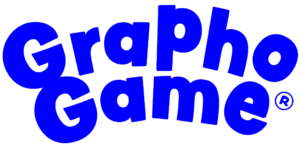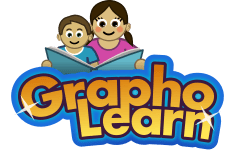GRAPHOGAME
Research-informed game for training literacy skills
As a result of decades of longitudinal research and development, the University of Jyväskylä (Finland) and Niilo Mäki Institute (Finland) created GraphoGame, a literacy software and e-leaning methodology.
GraphoGame/Learn is a research-informed educational reading game for learning and training letter sound knowledge, decoding and word level fluency. Currently, it does not train sentence level reading and reading comprehension. Meta-analysis research suggests that it is effective when adults are engaged in the learning process (McTigue et al. Reading Res Q. 2019). For more information see below. It has been used in all students in Finland entering school for over a decade and implemented in over 20 countries.
GraphoGame was developped though the GraphoLearn initiative, a global academic initiative dedicated to creating evidence-based literacy acquisition solutions and tools. GraphoLearn continues to develop and study GraphoGame-base language versions to this day.
All GraphoGame content abides by strict standards of quality and academic validation through peer-reviewed publications and studies. In 2017, Grapho Group Ltd was created as de developing and distribution partner for GraphoGame.
GraphoGame
- Commercial version
- Stable and user friendly
- Available through the App stores depending on country/language
- Can be used offline and/or online

GraphoLearn
- Research version
- Always evolving
- Not available through the App stores
- Collect extensive anonymous usage and user data for research

Research evidence to date
GraphoLearn (formally called GraphoGame) is a researcher-developed digital game, which is based on 25 years of research in Finland and around the world. It has been used with all beginning readers in Finland for the past 10 years. GraphoLearn can be administered online in the home or schools to support the development of essential skills in letter-sound association, decoding, and word reading. The skills emphasized are in line with evidence-based reading instruction in the classroom. The current GraphoGame is the commercial and more stable version of the education technology, and the content is virtually identical to GraphoLearn. It is distributed for a small fee to offset further research of the tool. It is available in several languages – U.S. English, U.K. English, Chinese, French and Dutch. The U.S. English version was developed in collaboration with University of Jyvaskyla, University of Cambridge, and Haskins Laboratories, and is available at no cost until the end of 2020 at the App Store and Google Play because of generous foundation and individual support to the Haskins Global Literacy Hub.
Recently a meta-analysis of past research studies on GraphoLearn (called GraphoGame then) was conducted primarily in Grades K-2 students at-risk and poor readers. While this report showed that there were no significant learning effects compared to controls when all studies were combined, a medium effect size* of 0.48 was observed when the game use was coupled with adult engagement (McTigue et al. Read Res Q., 2019). Adult engagement within this context included a wide range, from supporting and enhancing student motivation to including activities that paralleled what was learned in GraphoLearn. This effect size is comparable to, for example, Tier 2 type reading interventions delivered to Grades K-3 where the effect sizes were 0.36 – 0.54 on standardized reading measures (Wanzek et al., Educ Psychol Rev., 2016). The effect size was recently shown to be 0.39 for Tier 3 reading interventions (Wanzek et al. J Learn Disabil 2018). While more research is clearly warranted, this preliminary evidence suggests that, when used properly (i.e., with adult involvement), the program has promise to be an effective tool.
Current research efforts in the U.S. include:
- The C.A.R.I.N.G. project, where GraphoLearn is coupled with in-person reading intervention Empower Reading, in the CT area to test the combined efficacy and brain-based activity change.
- The R.E.S.C.U.E. project, where GraphoLearn is offered remotely to see if, and under what circumstances, it prevents the COVID slide, measured using Star Assessment. It is offered to parents and educators all over the U.S. with K-2 students this summer and fall.
*Effect sizes measure how important a difference is. The larger the effect size the greater the difference between intervention and control groups, and the more important that difference. You can look at an effect size when comparing a reading intervention group and a control group, to see how substantially different their outcomes are. Large effect sizes mean the difference is important; small effect sizes mean the difference is less important. In research, 0.2 is considered a ‘small’ effect size, 0.5 represents a ‘medium’ effect size, and 0.8 a ‘large’ effect size.
Projects

RESCUE
Reading Slide from Covid-19: Undoing the Effect

RESCUE for Families
FREE access to the America-English GraphoGame

EdTech research in Latin America
Using EdTech to foster literacy in Latin America
